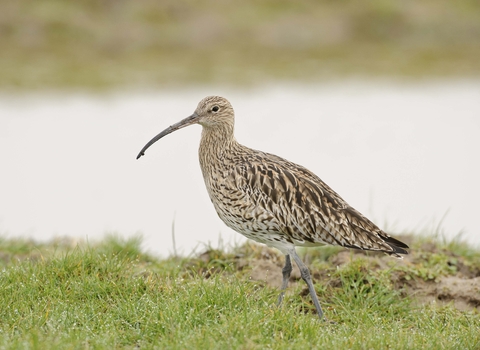
Curlew ©Terry Whittaker/2020VISION
Curlew
The eerie, 'cur-lee' call of the curlew is a recognisable sound of wet grasslands, moorlands, farmland and coasts. Its long, downcurved bill is an unmistakeable feature and perfect for probing the mud for prey.
Scientific name
Numenius arquataWhen to see
January to DecemberSpecies information
Category
Statistics
Length: 50-60cmWingspan: 90cm
Weight: 770g-1kg
Average lifespan: 5 years
Classified in the UK as Red under the Birds of Conservation Concern 5: the Red List for Birds (2021). Priority Species under the UK Post-2010 Biodiversity Framework. Listed as Near Threatened on the global IUCN Red List of Threatened Species.
About
The curlew is a very large, tall wader, about the same size as a female pheasant. Its haunting display call ('cur-lee') is unmistakable and can be heard from February through to July on its breeding grounds - wet grasslands, farmland, heath and moorlands. From July onwards, coastal numbers start to build up, peaking in January.How to identify
Curlew are mottled brown and grey, with long, bluish legs and a long, downcurved bill that is pink underneath. It can be distinguished from the smaller whimbrel by the longer bill and plain head pattern. When they fly, curlew have a white wedge on the rump.Distribution
A breeding bird of wet grasslands and moorlands in northern England, Wales and Scotland. Common on migration at wetlands throughout the country. Winters around the coast.Did you know?
An old Scottish name for the curlew is 'whaup' or 'great whaup'. Its evocative call has been immortalised in the poem, The Seafarer, which dates back to 1,000 AD, but may be even older: "I take my gladness in the... sound of the curlew instead of the laughter of men".Watch
Curlew (https://vimeo.com/444189244)
Curlew by Nicola S
